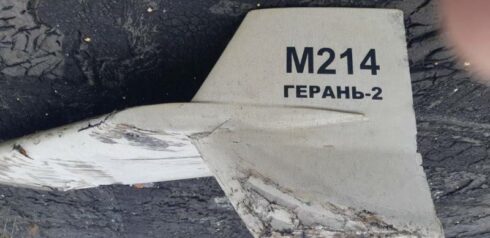Iranian strike drones Shahed are more and more often used by the Russian military in the war in Ukraine. Over the past week, drone strikes have targeted Ukrainian military facilities in the Kharkiv, Mykolaiv, and Dnipropetrovsk regions. In late September, Geranium UAVs (as drones from Iran were rebranded in Russia) destroyed several military facilities in the Odessa region, including the headquarters of the AFU South command in Odessa.
Experts note the difficulty of targeting UAVs with missile defense systems due to their speed and low flight altitude. A distinctive feature of the usage of the new UAVs is the striking of targets in the enemy rears, causing difficulties in supplying the Ukrainian army and disabling artillery and MLRS systems.
According to open sources, the Geranium-2 does not have its own video camera and is guided to the target by satellite navigation. In this regard, to improve the effectiveness of Geranium drones, the Russian military needs to solve the problem of early target detection with the fastest possible transmission of coordinates to the drone to inflict an attack.
It is also obvious that the use of kamikaze drones must be massive and systematic in order to cause sensitive damage to Ukrainian troops.
The exact number of UAVs provided by Iran is unknown. The conditions under which Russia received the drones, which inflict such sensitive strikes on the Ukrainian army, also remain unknown. According to some evidence, it may be about the transfer to Iran of a party of Russian SU-35 fighter jets, previously intended for sale to Egypt, but which did not arrive there due to U.S. sanctions. It is also unclear how quickly Russia will be able to set up production of the Geranium UAVs on its own territory.
Having entered service with the Russian military, the new Geranium-2 UAVs complement the Russian Cube and Lancet UAVs of the light class that are also deployed on the Ukrainian front lines. Apparently, the Geranium-2 is larger and heavier than the Cube or Lancet. It also carries a more powerful warhead and has an increased range. Thus, the Russian Army now has several barrage ammunition with different characteristics at its disposal. This makes it possible to increase the flexibility and effectiveness of the use of such weapons, as well as optimize the use of other striking means.
In fact, it is able to complement Russian long-range missiles, such as the famous Kalibr missiles that are launched by the Russian Navy from the Black Sea. The simplicity and cheapness of the UAVs, as well as their land launcher, give certain advantages. They have already proved their effectiveness against the small targets as artillery systems as well as against the enemy facilities like the military headquarters and warehouses in Odessa. The UAVs remain unnoticed by the Ukrainian air defences.
In any case, the significant increase in the size of the Russian armed forces after the mobilization, as well as the arrival of new types of weapons (including the Geranium UAVs, modern T-90M main battle tanks, and the new generation SU-57 fighters) allow us to conclude that the Kremlin is well prepared for the autumn-winter military campaign in Ukraine.






